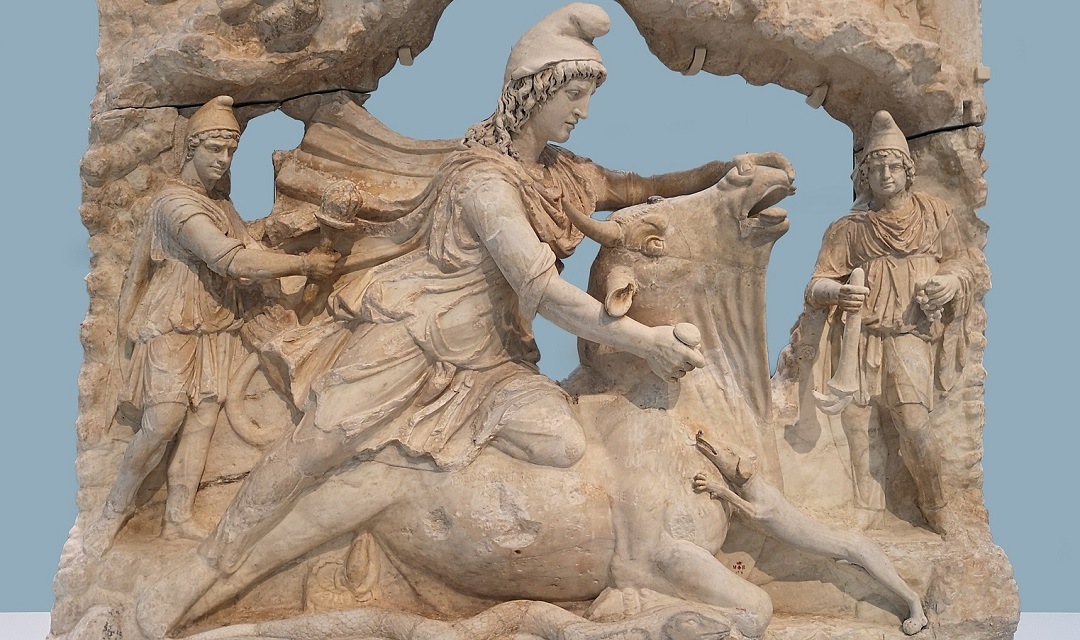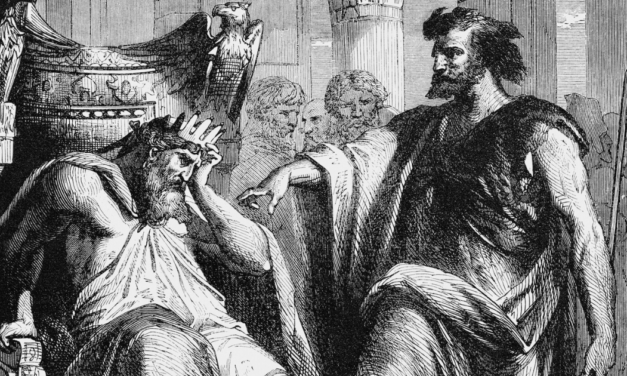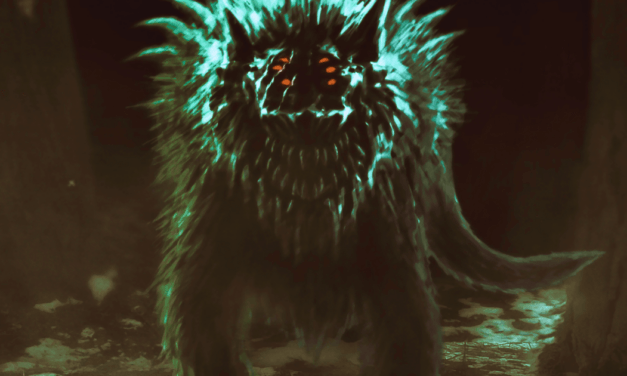This article first appeared in the Christian Research Journal, volume 16, number 3 (Winter, 1994). The full text of this article in PDF format can be obtained by clicking here. For more information about the Christian Research Journal, click here.
Summary
Many Christian college students have encountered criticisms of Christianity based on claims that early Christianity and the New Testament borrowed important beliefs and practices from a number of pagan mystery religions. Since these claims undermine such central Christian doctrines as Christ’s death and resurrection, the charges are serious. But the evidence for such claims, when it even exists, often lies in sources several centuries older than the New Testament. Moreover, the alleged parallels often result from liberal scholars uncritically describing pagan beliefs and practices in Christian language and then marveling at the striking parallels they think they’ve discovered.
During the first half of the twentieth century, a number of liberal authors and professors claimed that the New Testament teaching about Jesus’ death and resurrection, the New Birth, and the Christian practices of baptism and the Lord’s Supper were derived from the pagan mystery religions. Of major concern in all this is the charge that the New Testament doctrine of salvation parallels themes commonly found in the mystery religions: a savior-god dies violently for those he will eventually deliver, after which that god is restored to life.
Was the New Testament influenced by the pagan religions of the first century A.D.? Even though I surveyed this matter in a 1992 book,1 the issues are so important — especially for Christian college students who often do not know where to look for answers — that there is considerable merit in addressing this question in a popular, nontechnical format.
WHAT WERE THE MYSTERY RELIGIONS?
Other than Judaism and Christianity, the mystery religions were the most influential religions in the early centuries after Christ. The reason these cults were called “mystery religions” is that they involved secret ceremonies known only to those initiated into the cult. The major benefit of these practices was thought to be some kind of salvation.
The mystery religions were not, of course, the only manifestations of the religious spirit in the eastern Roman Empire. One could also find public cults not requiring an initiation ceremony into secret beliefs and practices. The Greek Olympian religion and its Roman counterpart are examples of this type of religion.
Each Mediterranean region produced its own mystery religion. Out of Greece came the cults of Demeter and Dionysus, as well as the Eleusinian and Orphic mystery religions, which developed later.2 Asia Minor gave birth to the cult of Cybele, the Great Mother, and her beloved, a shepherd named Attis. The cult of Isis and Osiris (later changed to Serapis) originated in Egypt, while Syria and Palestine saw the rise of the cult of Adonis. Finally, Persia (Iran) was a leading early locale for the cult of Mithras, which — due to its frequent use of the imagery of war — held a special appeal to Roman soldiers. The earlier Greek mystery religions were state religions in the sense that they attained the status of a public or civil cult and served a national or public function. The later non-Greek mysteries were personal, private, and individualistic.
Basic Traits
One must avoid any suggestion that there was one common mystery religion. While a tendency toward eclecticism or synthesis developed after A.D. 300, each of the mystery cults was a separate and distinct religion during the century that saw the birth of the Christian church. Moreover, each mystery cult assumed different forms in different cultural settings and underwent significant changes, especially after A.D. 100. Nevertheless, the mystery religions exhibited five common traits.
(1) Central to each mystery was its use of an annual vegetation cycle in which life is renewed each spring and dies each fall. Followers of the mystery cults found deep symbolic significance in the natural processes of growth, death, decay, and rebirth.
(2) As noted above, each cult made important use of secret ceremonies or mysteries, often in connection with an initiation rite. Each mystery religion also passed on a “secret” to the initiate that included information about the life of the cult’s god or goddess and how humans might achieve unity with that deity. This “knowledge” was always a secret or esoteric knowledge, unattainable by any outside the circle of the cult.
(3) Each mystery also centered around a myth in which the deity either returned to life after death or else triumphed over his enemies. Implicit in the myth was the theme of redemption from everything earthly and temporal. The secret meaning of the cult and its accompanying myth was expressed in a “sacramental drama” that appealed largely to the feelings and emotions of the initiates. This religious ecstasy was supposed to lead them to think they were experiencing the beginning of a new life.
(4) The mysteries had little or no use for doctrine and correct belief. They were primarily concerned with the emotional life of their followers. The cults used many different means to affect the emotions and imaginations of initiates and hence bring about “union with the god”: processions, fasting, a play, acts of purification, blazing lights, and esoteric liturgies. This lack of any emphasis on correct belief marked an important difference between the mysteries and Christianity. The Christian faith was exclusivistic in the sense that it recognized only one legitimate path to God and salvation, Jesus Christ. The mysteries were inclusivistic in the sense that nothing prevented a believer in one cult from following other mysteries.
(5) The immediate goal of the initiates was a mystical experience that led them to feel they had achieved union with their god. Beyond this quest for mystical union were two more ultimate goals: some kind of redemption or salvation, and immortality.
Evolution
Before A.D. 100, the mystery religions were still largely confined to specific localities and were still a relatively novel phenomenon. After A.D. 100, they gradually began to attain a widespread popular influence throughout the Roman Empire. But they also underwent significant changes that often resulted from the various cults absorbing elements from each other. As devotees of the mysteries became increasingly eclectic in their beliefs and practices, new and odd combinations of the older mysteries began to emerge. And as the cults continued to tone down the more objectionable features of their older practices, they began to attract greater numbers of followers.
RECONSTRUCTING THE MYSTERIES
It is not until we come to the third century A.D. that we find sufficient source material (i.e., information about the mystery religions from the writings of the time) to permit a relatively complete reconstruction of their content. Far too many writers use this late source material (after A.D. 200) to form reconstructions of the third-century mystery experience and then uncritically reason back to what they think must have been the earlier nature of the cults. This practice is exceptionally bad scholarship and should not be allowed to stand without challenge. Information about a cult that comes several hundred years after the close of the New Testament canon must not be read back into what is presumed to be the status of the cult during the first century A.D. The crucial question is not what possible influence the mysteries may have had on segments of Christendom after A.D. 400, but what effect the emerging mysteries may have had on the New Testament in the first century.
The Cult of Isis and Osiris
The cult of Isis originated in Egypt and went through two major stages. In its older Egyptian version, which was not a mystery religion, Isis was regarded as the goddess of heaven, earth, the sea, and the unseen world below. In this earlier stage, Isis had a husband named Osiris. The cult of Isis became a mystery religion only after Ptolemy the First introduced major changes, sometime after 300 B.C. In the later stage, a new god named Serapis became Isis’s consort. Ptolemy introduced these changes in order to synthesize Egyptian and Greek concerns in his kingdom, thus hastening the Hellenization of Egypt.
From Egypt, the cult of Isis gradually made its way to Rome. While Rome was at first repelled by the cult, the religion finally entered the city during the reign of Caligula (A.D. 37-41). Its influence spread gradually during the next two centuries, and in some locales it became a major rival of Christianity. The cult’s success in the Roman Empire seems to have resulted from its impressive ritual and the hope of immortality offered to its followers.
The basic myth of the Isis cult concerned Osiris, her husband during the earlier Egyptian and nonmystery stage of the religion. According to the most common version of the myth, Osiris was murdered by his brother who then sank the coffin containing Osiris’s body into the Nile river. Isis discovered the body and returned it to Egypt. But her brother-in-law once again gained access to the body, this time dismembering it into fourteen pieces which he scattered widely. Following a long search, Isis recovered each part of the body. It is at this point that the language used to describe what followed is crucial. Sometimes those telling the story are satisfied to say that Osiris came back to life, even though such language claims far more than the myth allows. Some writers go even further and refer to the alleged “resurrection” of Osiris. One liberal scholar illustrates how biased some writers are when they describe the pagan myth in Christian language: “The dead body of Osiris floated in the Nile and he returned to life, this being accomplished by a baptism in the waters of the Nile.”3
This biased and sloppy use of language suggests three misleading analogies between Osiris and Christ: (1) a savior god dies and (2) then experiences a resurrection accompanied by (3) water baptism. But the alleged similarities, as well as the language used to describe them, turn out to be fabrications of the modern scholar and are not part of the original myth. Comparisons between the resurrection of Jesus and the resuscitation of Osiris are greatly exaggerated.4 Not every version of the myth has Osiris returning to life; in some he simply becomes king of the underworld. Equally far-fetched are attempts to find an analogue of Christian baptism in the Osins myth.5 The fate of Osiris’s coffin in the Nile is as relevant to baptism as the sinking of Atlantis.
As previously noted, during its later mystery stage, the male deity of the Isis cult is no longer the dying Osiris but Serapis. Serapis is often portrayed as a sun god, and it is clear that he was not a dying god. Obviously then, neither could he be a rising god. Thus, it is worth remembering that the post-Ptolemaic mystery version of the Isis cult that was in circulation from about 300 B.C. through the early centuries of the Christian era had absolutely nothing that could resemble a dying and rising savior-god.
The Cult of Cybele and Attis
Cybele, also known as the Great Mother, was worshiped through much of the Hellenistic world. She undoubtedly began as a goddess of nature. Her early worship included orgiastic ceremonies in which her frenzied male worshipers were led to castrate themselves, following which they became “Galli” or eunuch-priests of the goddess. Cybele eventually came to be viewed as the Mother of all gods and the mistress of all life.
Most of our information about the cult describes its practices during its later Roman period. But the details are slim and almost all the source material is relatively late, certainly datable long after the close of the New Testament canon.
According to myth, Cybele loved a shepherd named Attis. Because Attis was unfaithful, she drove him insane. Overcome by madness, Attis castrated himself and died. This drove Cybele into great mourning, and it introduced death into the natural world. But then Cybele restored Attis to life, an event that also brought the world of nature back to life.
The presuppositions of the interpreter tend to determine the language used to describe what followed Attis’s death. Many writers refer carelessly to the “resurrection of Attis.” But surely this is an exaggeration. There is no mention of anything resembling a resurrection in the myth, which suggests that Cybele could only preserve Attis’s dead body. Beyond this, there is mention of the body’s hair continuing to grow, along with some movement of his little finger. In some versions of the myth, Attis’s return to life took the form of his being changed into an evergreen tree. Since the basic idea underlying the myth was the annual vegetation cycle, any resemblance to the bodily resurrection of Christ is greatly exaggerated.
Eventually a public rehearsal of the Attis myth became an annual event in which worshipers shared in Attis’s “immortality.” Each spring the followers of Cybele would mourn for the dead Attis in acts of fasting and flagellation.
It was only during the later Roman celebrations (after A.D. 300) of the spring festival that anything remotely connected with a “resurrection” appears. The pine tree symbolizing Attis was cut down and then carried corpse-like into the sanctuary. Later in the prolonged festival, the tree was buried while the initiates worked themselves into a frenzy that included gashing themselves with knives. The next night, the “grave” of the tree was opened and the “resurrection of Attis” was celebrated. But the language of these late sources is highly ambiguous. In truth, no clear-cut, unambiguous reference to the supposed “resurrection” of Attis appears, even in the very late literature from the fourth century after Christ.
The Taurobolium
The best-known rite of the cult of the Great Mother was the tauroboliurn. It is important to note, however, that this ritual was not part of the cult in its earlier stages. It entered the religion sometime after the middle of the second century A.D.
During the ceremony, initiates stood or reclined in a pit as a bull was slaughtered on a platform above them.6 The initiate would then be bathed in the warm blood of the dying animal. It has been alleged that the taurobolium was a source for Christian language about being washed in the blood of the lamb (Rev. 7:14) or sprinkled with the blood of Jesus (1 Pet. 1:2). It has also been cited as the source for Paul’s teaching in Romans 6:1-4, where he relates Christian baptism to the Christian’s identification with Christ’s death and resurrection.
No notion of death and resurrection was ever part of the taurobolium, however. The best available evidence requires us to date the ritual about one hundred years after Paul wrote Romans 6:1-4. Not one existing text supports the claim that the taurobolium memorialized the death and “resurrection” of Attis. The pagan rite could not possibly have been the source for Paul’s teaching in Romans 6. Only near the end of the fourth century A.D. did the ritual add the notion of rebirth. Several important scholars see a Christian influence at work in this later development.7 It is clear, then, that the chronological development of the rite makes it impossible for it to have influenced first-century Christianity. The New Testament teaching about the shedding of blood should be viewed in the context of its Old Testament background — the Passover and the temple sacrifice.
Mithraism
Attempts to reconstruct the beliefs and practices of Mithraism face enormous challenges because of the scanty information that has survived Proponents of the cult explained the world in terms of two ultimate and opposing principles, one good (depicted as light) and the other evil (darkness). Human beings must choose which side they will fight for; they are trapped in the conflict between light and darkness. Mithra came to be regarded as the most powerful mediator who could help humans ward off attacks from demonic forces.8
The major reason why no Mithraic influence on first-century Christianity is possible is the timing: it’s all wrong! The flowering of Mithraism occurred after the close of the New Testament canon, much too late for it to have influenced anything that appears in the New Testament.9 Moreover, no monuments for the cult can be dated earlier than A.D. 90-100, and even this dating requires us to make some exceedingly generous assumptions. Chronological difficulties, then, make the possibility of a Mithraic influence on early Christianity extremely improbable. Certainly, there remains no credible evidence for such an influence.
STRIKING PARALLELS?
Enough has been said thus far to permit comment on one of the major faults of the above-mentioned liberal scholars. I refer to the frequency with which their writings evidence a careless, even sloppy use of language. One frequently encounters scholars who first use Christian terminology to describe pagan beliefs and practices, and then marvel at the striking parallels they think they have discovered. One can go a long way toward “proving” early Christian dependence on the mysteries by describing some mystery belief or practice in Christian terminology. J. Godwin does this in his book, Mystery Religions in the Ancient World, which describes the criobolium (see footnote 6) as a “blood baptism” in which the initiate is “washed in the blood of the lamb.”10 While uninformed readers might be stunned by this remarkable similarity to Christianity (see Rev. 7:14), knowledgeable readers will see such a claim as the reflection of a strong, negative bias against Christianity.
Exaggerations and oversimplifications abound in this kind of literature. One encounters overblown claims about alleged likenesses between baptism and the Lord’s Supper and similar “sacraments” in certain mystery cults. Attempts to find analogies between the resurrection of Christ and the alleged “resurrections” of the mystery deities involve massive amounts of oversimplification and inattention to detail.
Pagan Rituals and the Christian Sacraments
The mere fact that Christianity has a sacred meal and a washing of the body is supposed to prove that it borrowed these ceremonies from similar meals and washings in the pagan cults. By themselves, of course, such outward similarities prove nothing. After all, religious ceremonies can assume only a limited number of forms, and they will naturally relate to important or common aspects of human life. The more important question is the meaning of the pagan practices. Ceremonial washings that antedate the New Testament have a different meaning from New Testament baptism, while pagan washings after A.D. 100 come too late to influence the New Testament and, indeed, might themselves have been influenced by Christianity.11 Sacred meals in the pre-Christian Greek mysteries fail to prove anything since the chronology is all wrong. The Greek ceremonies that are supposed to have influenced first-century Christians had long since disappeared by the time we get to Jesus and Paul. Sacred meals in such post-Christian mysteries as Mithraism come too late.
Unlike the initiation rites of the mystery cults, Christian baptism looks back to what a real, historical person — Jesus Christ — did in history. Advocates of the mystery cults believed their “sacraments” had the power to give the individual the benefits of immortality in a mechanical or magical way, without his or her undergoing any moral or spiritual transformation. This certainly was not Paul’s view, either of salvation or of the operation of the Christian sacraments. In contrast with pagan initiation ceremonies, Christian baptism is not a mechanical or magical ceremony. It is clear that the sources of Christian baptism are not to be found either in the taurobolium (which is post first-century anyway) or in the washings of the pagan mysteries. Its sources lie rather in the washings of purification found in the Old Testament and in the Jewish practice of baptizing proselytes, the latter being the most likely source for the baptistic practices of John the Baptist.
Of all the mystery cults, only Mithraism had anything that resembled the Lord’s Supper. A piece of bread and a cup of water were placed before initiates while the priest of Mithra spoke some ceremonial words. But the late introduction of this ritual precludes its having any influence upon first-century Christianity.
Claims that the Lord’s Supper was derived from pagan sacred meals are grounded in exaggerations and oversimplifications. The supposed parallels and analogies break down completely.12 Any quest for the historical antecedents of the Lord’s Supper is more likely to succeed if it stays closer to the Jewish foundations of the Christian faith than if it wanders off into the practices of the pagan cults. The Lord’s Supper looked back to a real, historical person and to something He did in history. The occasion for Jesus’ introduction of the Christian Lord’s Supper was the Jewish Passover feast. Attempts to find pagan sources for baptism and the Lord’s Supper must be judged to fail.
The Death of the Mystery Gods and the Death of Jesus
The best way to evaluate the alleged dependence of early Christian beliefs about Christ’s death and resurrection on the pagan myths of a dying and rising savior-god is to examine carefully the supposed parallels. The death of Jesus differs from the deaths of the pagan gods in at least six ways:
(1) None of the so-called savior-gods died for someone else. The notion of the Son of God dying in place of His creatures is unique to Christianity.13
(2) Only Jesus died for sin. As Günter Wagner observes, to none of the pagan gods “has the intention of helping men been attributed. The sort of death that they died is quite different (hunting accident, self-emasculation, etc.).”14
(3) Jesus died once and for all (Heb. 7:27; 9:25-28; 10:10-14). In contrast, the mystery gods were vegetation deities whose repeated deaths and resuscitations depict the annual cycle of nature.
(4) Jesus’ death was an actual event in history. The death of the mystery god appears in a mythical drama with no historical ties; its continued rehearsal celebrates the recurring death and rebirth of nature. The incontestable fact that the early church believed that its proclamation of Jesus’ death and resurrection was grounded in an actual historical event makes absurd any attempt to derive this belief from the mythical, nonhistorical stories of the pagan cults.15
(5) Unlike the mystery gods, Jesus died voluntarily. Nothing like this appears even implicitly in the mysteries.
(6) And finally, Jesus’ death was not a defeat but a triumph. Christianity stands entirely apart from the pagan mysteries in that its report of Jesus’ death is a message of triumph. Even as Jesus was experiencing the pain and humiliation of the cross, He was the victor. The New Testament’s mood of exultation contrasts sharply with that of the mystery religions, whose followers wept and mourned for the terrible fate that overtook their gods.16
The Risen Christ and the “Rising Savior-Gods”
Which mystery gods actually experienced a resurrection from the dead? Certainly no early texts refer to any resurrection of Attis. Nor is the case for a resurrection of Osiris any stronger. One can speak of a “resurrection” in the stories of Osiris, Attis, and Adonis only in the most extended of senses.17 For example, after Isis gathered together the pieces of Osiris’s dismembered body, Osiris became “Lord of the Underworld.” This is a poor substitute for a resurrection like that of Jesus Christ. And, no claim can be made that Mithras was a dying and rising god. The tide of scholarly opinion has turned dramatically against attempts to make early Christianity dependent on the so-called dying and rising gods of Hellenistic paganism.18 Any unbiased examination of the evidence shows that such claims must be rejected.
Christian Rebirth and Cultic Initiation Rites
Liberal writings on the subject are full of sweeping generalizations to the effect that early Christianity borrowed its notion of rebirth from the pagan mysteries.19 But the evidence makes it clear that there was no pre-Christian doctrine of rebirth for the Christians to borrow. There are actually very few references to the notion of rebirth in the evidence that has survived, and even these are either very late or very ambiguous. They provide no help in settling the question of the source of the New Testament use of the concept. The claim that pre-Christian mysteries regarded their initiation rites as a kind of rebirth is unsupported by any evidence contemporary with such alleged practices. Instead, a view found in much later texts is read back into earlier rites, which are then interpreted quite speculatively as dramatic portrayals of the initiate’s “new birth.” The belief that pre-Christian mysteries used “rebirth” as a technical term lacks support from even one single text.
Most contemporary scholars maintain that the mystery use of the concept of rebirth (testified to only in evidence dated after A.D. 300) differs so significantly from its New Testament usage that any possibility of a close link is ruled out. The most that such scholars are willing to concede is the possibility that some Christians borrowed the metaphor or imagery from the common speech of the time and recast it to fit their distinctive theological beliefs. So even if the metaphor of rebirth was Hellenistic, its content within Christianity was unique.20
SEVEN ARGUMENTS AGAINST CHRISTIAN DEPENDENCE ON THE MYSTERIES
I conclude by noting seven points that undermine liberal efforts to show that first-century Christianity borrowed essential beliefs and practices from the pagan mystery religions.
(1) Arguments offered to “prove” a Christian dependence on the mysteries illustrate the logical fallacy of false cause. This fallacy is committed whenever someone reasons that just because two things exist side by side, one of them must have caused the other. As we all should know, mere coincidence does not prove causal connection. Nor does similarity prove dependence.
(2) Many alleged similarities between Christianity and the mysteries are either greatly exaggerated or fabricated. Scholars often describe pagan rituals in language they borrow from Christianity. The careless use of language could lead one to speak of a “Last Supper” in Mithraism or a “baptism” in the cult of Isis. It is inexcusable nonsense to take the word “savior” with all of its New Testament connotations and apply it to Osiris or Attis as though they were savior-gods in any similar sense.
(3) The chronology is all wrong. Almost all of our sources of information about the pagan religions alleged to have influenced early Christianity are dated very late. We frequently find writers quoting from documents written 300 years later than Paul in efforts to produce ideas that allegedly influenced Paul. We must reject the assumption that just because a cult had a certain belief or practice in the third or fourth century after Christ, it therefore had the same belief or practice in the first century.
(4) Paul would never have consciously borrowed from the pagan religions. All of our information about him makes it highly unlikely that he was in any sense influenced by pagan sources. He placed great emphasis on his early training in a strict form of Judaism (Phil. 3:5). He warned the Colossians against the very sort of influence that advocates of Christian syncretism have attributed to him, namely, letting their minds be captured by alien speculations (Col. 2:8).
(5) Early Christianity was an exclusivistic faith. As J. Machen explains, the mystery cults were nonexclusive. “A man could become initiated into the mysteries of Isis or Mithras without at all giving up his former beliefs; but if he were to be received into the Church, according to the preaching of Paul, he must forsake all other Saviors for the Lord Jesus Christ….Amid the prevailing syncretism of the Greco-Roman world, the religion of Paul, with the religion of Israel, stands absolutely alone.”2’ This Christian exclusivism should be a starting point for all reflection about the possible relations between Christianity and its pagan competitors. Any hint of syncretism in the New Testament would have caused immediate controversy.
(6) Unlike the mysteries, the religion of Paul was grounded on events that actually happened in history. The mysticism of the mystery cults was essentially nonhistorical. Their myths were dramas, or pictures, of what the initiate went through, not real historical events, as Paul regarded Christ’s death and resurrection to be. The Christian affirmation that the death and resurrection of Christ happened to a historical person at a particular time and place has absolutely no parallel in any pagan mystery religion.
(7) What few parallels may still remain may reflect a Christian influence on the pagan systems. As Bruce Metzger has argued, “It must not be uncritically assumed that the Mysteries always influenced Christianity, for it is not only possible but probable that in certain cases, the influence moved in the opposite direction.”22 It should not be surprising that leaders of cults that were being successfully challenged by Christianity should do something to counter the challenge. What better way to do this than by offering a pagan substitute? Pagan attempts to counter the growing influence of Christianity by imitating it are clearly apparent in measures instituted by Julian the Apostate, who was the Roman emperor from A.D. 361 to 363.
A FINAL WORD
Liberal efforts to undermine the uniqueness of the Christian revelation via claims of a pagan religious influence collapse quickly once a full account of the information is available. It is clear that the liberal arguments exhibit astoundingly bad scholarship. Indeed, this conclusion may be too generous. According to one writer, a more accurate account of these bad arguments would describe them as “prejudiced irresponsibility.”23 But in order to become completely informed on these matters, wise readers will work through material cited in the brief bibliography.
NOTES
- See Ronald Nash, The Gospel and the Greeks (Richardson, TX: Probe Books, 1992). The book was originally published in 1984 under the title, Christianity and the Hellenistic World.
- I must pass over these Greek versions of the mystery cults. See Nash, 131-36.
- Joseph Klausner, From Jesus to Paul (New York: Macmillan, 1943), 104.
- See Edwin Yamauchi, “Easter – Myth, Hallucination, or History?” Christianity Today, 29 March 1974, 660-63.
- See Günter Wagner, Pauline Baptism and the Pagan Mysteries (Edinburgh: Oliver and Boyd, 1967), 260ff.
- When the ceremony used a lamb, it was the criobolium. Since lambs cost far less than bulls, this modification was rather common.
- See Nash, chapter 9.
- For more detail, see Nash, 143-48.
- See Franz Cumont, The Mysteries of Mithra (Chicago: Open Court, 1903), 87ff.
- Joscelyn Godwin, Mystery Religions in the Ancient World (New York: Harper and Row, 1981), 111.
- See Nash, chapter 9.
- See Herman Ridderbos, Paul: An Outline of His Theology (Grand Rapids: Eerdmans, 1975), 24.
- See Martin Hengel, The Son of God (Philadelphia: Fortress Press, 1976), 26.
- Wagner, 284.
- See W. K. C. Guthrie, Ortheus and Greek Religion, 2d ed. (London: Methuen, 1952), 268.
- See A. D. Nock, “Early Gentile Christianity and Its Hellenistic Background,” in Essays on the Trinity and the Incarnation, ed. A. E. J. Rawlinson (London: Longmans, Green, 1928), 106.
- See J. Gresham Machen, The Origin of Paul’s Religion (New York: Macmillan, 1925), 234-35.
- See Nash, 161-99.
- See Nash, 173-78.
- See W. F. Flemington, The New Testament Doctrine of Baptism (London: SPCK, 1948), 76-81.
- Machen, 9.
- Bruce M. Metzger, Historical and Literary Studies: Pagan, Jewish, and Christian (Grand Rapids: Eerdmans, 1968), 11. The possible parallels in view here would naturally be dated late, after A.D. 200 for the most part.
- Gordon H. Clark, Thales to Dewey (Boston: Houghton Mifflin, 1957), 195.









